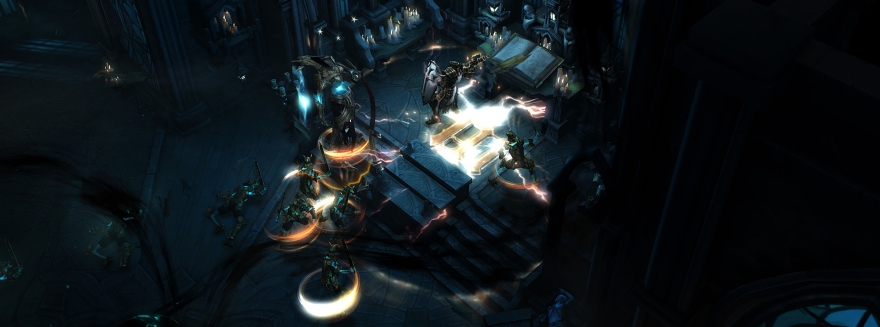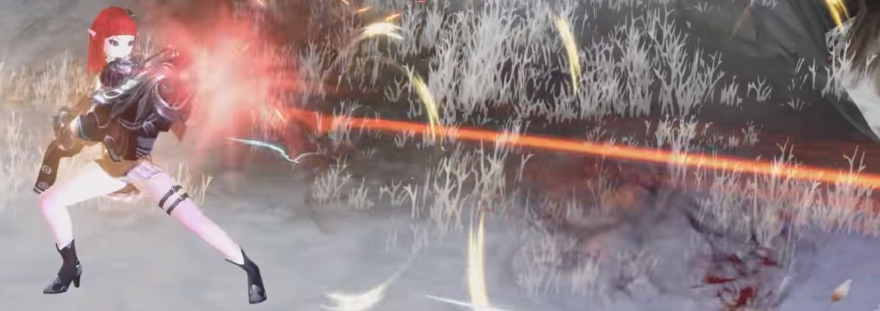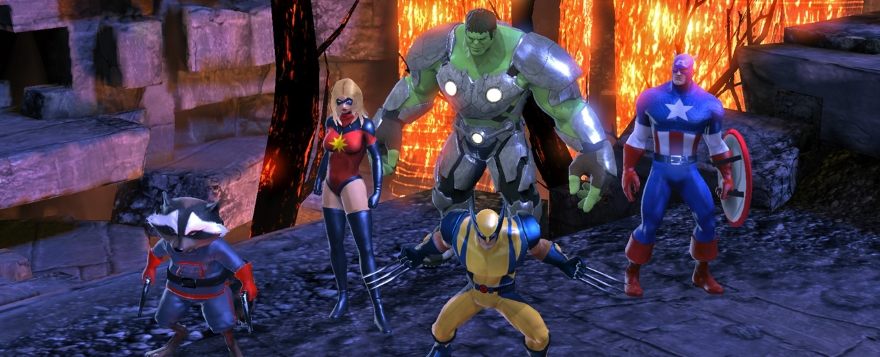
Bored of MMOs, despondent about the industry, or simply looking for something a little different? Turning to something similar to MMOs, yet offering a new experience, is what’s attracted many people to online action RPGs.
MMOARPGs, or ARPGs for short, are a booming segment of the online games industry for their fast gameplay, bite-sized sessions, and ease of play. They’re distinguished by features not generally found in MMOs, such as click-to-move, an isometric viewpoint, time-to-kill that is often lightning fast, simple controls, heavily instanced worlds, and loot exploding out of corpses like squishy piñatas. Still, they offer many of the same qualities that are found in traditional MMOs, most notably persistent characters and multiplayer connections.
If you’ve ever been curious about trying out an online ARPG but don’t know where to start, here’s our quick-and-dirty guide through four titles that are bridging the gap between MMOs and single-player ARPGs (such as the excellent Torchlight II and Titan Quest).
Diablo III
Diablo wasn’t the first action RPG on the block, but it was certainly a defining one — so much so that ARPGs are often called “Diablo clones.” Blizzard’s long-awaited third installment of the franchise originally began more as an MMO but shed some of those features in favor of creating a more fantasy hybrid title.
Diablo III is the epitome of polish and art, two areas in which Blizzard often excels. While you do have to buy the game (and optionally its expansion) up-front, you are guaranteed to be getting a AAA experience. The title takes place in a gothic world full of zombies, witch doctors, demons, and other unspeakable evils, and while it does have a touch of color to it, its subject matter can often be quite mature.
With the refinements over the past year and the jettison of the controversial auction house, Diablo III is in a much better shape than it was at launch. It handles like a dream and offers classes that offer quite different playstyles from each other. After progressing through the storyline, players have many other activities from which to choose, including participating in limited-time seasons, bounties, and rifts.
While Diablo III does have clans (guilds), chat channel, and options for multiplayer romps, it’s probably the least MMOish of any game on this list due to its instanced nature and lack of an economy or other social features. That plus its up-front price are its main drawbacks, but those who aren’t bothered by either will undoubtedly discover a thrilling ride through a dark Halloweenland.
Path of Exile
At first glance, Path of Exile might appear to be a knockoff clone of Diablo III. It too takes place in a grimdark world (although much grimmer and darker than Blizzard’s title), with characters chopping through the undead and witnessing many gory sights. However, this title distinguishes itself in so many ways that what it lacks in visuals and name recognition it makes up for in creativity and connectivity.
Fans of Path of Exile often rave about the dedicated and communicative nature of its developer, Grinding Gear Games, as well as the studio’s frequent patch releases. Path of Exile comes off more as a title with an active and involved community, too, tipping it more to the MMO side of the spectrum.
However, Path of Exile’s selling points are its insanely detailed passive skill tree (which allows players to spec just about any way they want, even into other classes’ skills), its innovative flask system, and the fact that it’s the only ARPG that offers player housing.
Another strong point in its favor is that Path of Exile is so free that you almost feel bad playing it. None of the title’s content is monetized; instead, the developers limit themselves to selling cosmetic and convenience items only. People are downright rabid about this game, and that testimony goes a long way in pulling in others.
Devilian
The new kid on the ARPG block, Devilian is a Korean import that’s being handled here by Trion Worlds as part of its Glyph platform. Because it just launched in December, it might be too soon to tell how popular or full-featured this game might be (although it was minorly distressing to hear that its Korean server got shuttered back in August).
Devilian bills itself as the first true MMOARPG on the market, which as far as I can tell, mostly refers to its gameplay being set in a world that features large zones (albeit ones with walls and defined paths everywhere) populated by players running and intermingling all over the place. Also, mounts. Don’t see a lot of ARPGs with mounts. It’s a free-to-play title as well, hawking pets, costumes, inventory space, and other luxuries as ways to funnel profits back to its publisher.
There are fewer classes to play in Devilian than the other titles, although they’re all mechanically solid and satisfying in their own ways. The game’s big hook is that characters can occasionally transform into devilian modes, sporting a different look and offering powerful abilities that help with bosses and the like.
Players seem to like the mutual gifting system and auto-run feature, although there have been complaints about the bare-bones nature of the skill trees and lack of significant visual customization.
Marvel Heroes
In a sea of fantasy titles, Marvel Heroes stands out by latching itself to the immensely popular (and active) superhero IP. The title’s taken advantage of both the comics and movies by developing costumes and content to tie-in with the current happenings in the Marvel universe.
If there was an award for an online ARPG with the most classes, Marvel Heroes would win it easily. The game has well over 50 heroes in its roster so far with a new one coming out about every month. It also has a line-up of “team-up” companion heroes that assist with the player’s character.
Marvel Heroes is free-to-play, although it heavily depends on players purchasing new heroes and costumes (not to mention lockboxes, called fortune cards here) to make the dough. To take the sting out of that, the title does make it possible to earn (or even discover) new heroes through gameplay, although that is the longer route.
What it lacks in a connected, persistent world, Marvel Heroes makes up for in its sheer number of game mode options, including story mode, terminals, patrols, the Danger Room, and even the genre’s first raids. It also has frequent giveaways and events, keeping its population constantly busy. On the downside, its loot and gear system is bloated and somewhat confusing for the newcomer, and its large roster often means that some heroes are incredibly overpowered while others are quite neglected.
Turning it over to you!
Hopefully this gives you a starting point in your quest to find an ARPG to enjoy. Let’s hear from MOP’s community on the subject: what games they enjoy and what features of the above titles they laud and criticize.



















